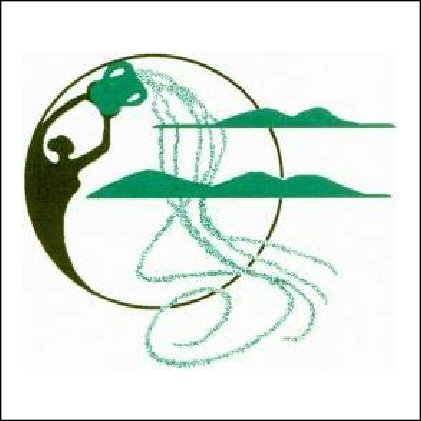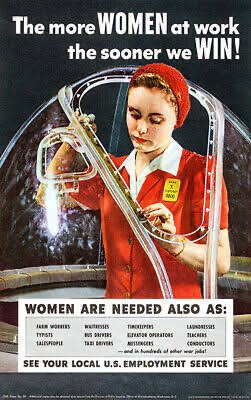THE TURNAROUND: A Door Opened, Then Closed
In 1962, Betty Friedan wrote The Feminine Mystique, which was published in 1963 in the U.S., and which laid out her investigation into a problem that many women were experiencing—including herself—after the end of the Second World War and on into the 1950s.
The problem, she said, had no name—it only had symptoms.
Friedan’s book has been said to have sparked the second wave of feminism.
While there were other factors at play as well, the book did create a spark
that lit a fire
that spread exponentially
Betty Friedan
1921-2006
Betty Friedan, an American feminist writer and activist, was a leading figure in the women’s movement in the United States.
She founded and was elected the first president of the National Organization for Women (NOW), which aimed to bring women into the mainstream of American society in fully equal partnership with men.
Friedan was influenced by the work of the French philosopher Simone de Beauvoir and her book The Second Sex, which was published in French in 1949, translated into English in 1951, and hit the presses in the U.S. in 1953.
Simone de Beauvoir
1908-1986
Simone de Beauvoir was a French existentialist philosopher, writer, social theorist, and feminist activist.
She was best known for her work in feminist philosophy, The Second Sex, a detailed analysis of women's oppression and a foundational piece of contemporary feminism.
In her book, de Beauvoir critically explored what it was like in past and present times to live as a woman in a patriarchal world.
She challenged the long-held notion that gender differences are based on biological differences and that women therefore are inherently inferior beings to men.
The basic argument of The Second Sex is that women have historically been oppressed by men. More specifically, women have been relegated to the status of object or “Other” and therefore lack independence.
Betty Friedan said of Simone de Beauvoir: “She started me on a road I will keep moving on even though it’s rough going when no one has a single map to follow”—in “Sex, Society, and the Female Dilemma: A Dialogue” by Simone de Beauvoir and Betty Friedan,” an article published for International Women’s Year in the June 14, 1975 issue of “The Saturday Review,” pp. 12-21.
To develop her investigation in her own work, The Feminine Mystique, Friedan initially examined the situation of the white women (her book has been criticized for its focus solely on white women) who were sent back to their homes as housewives after the Second World War.
Theirs was a significant “sending back home” because it followed on the heels of an initially cordial governmental invitation.
The women had been invited to walk through a previously closed door to a workplace that was now generally open to them—only so, however, because men had been drafted to fight overseas, and had left jobs open that needed filling.
Friedan examined what the women’s stint in the world of work had meant to them and to the society at large—and more specifically, what the subsequent loss of those jobs did to the many women who then became housewives, segregated in their suburban homes when their men returned from war.
I believe that there is a telling sign that indicates how these women were actually being treated in that wartime.
At the point when their husbands were drafted and went off to war in the 1940s— and the work they left still needed to be done—there was no indicative sense that women were in any way incapable of filling those empty jobs.
They were actively wooed by the U.S. government into the workplace.
In reality, though, the women were being treated as commodities—they were brought in and used when needed—then pushed out when the need dried up because someone else was there to fill the gap, namely, the male soldiers who had returned.
And many of those former soldiers, by the way, were also seeking a cozy home life staffed with a fully supportive housewife.
However, before we delve into the enlightening theories Friedan presents throughout her book, I thought it might be helpful to take a quick look at some typical magazine ads and posters that circulated in the 1940s during the war, and then to see the shift in their focus during the 15 or so years following.
Although the ads and posters were not the main influencers in the apparent ease of the movement of women into and out of the workforce, they did assist in the process—and made money for their sponsoring companies that were selling refrigerators, stoves, and other household goods to those housewives.
But…
When Johnny came marching home again, the focus in the ads changed in the late 1940s on into the 1950s. And the ads themselves changed.
This overview might offer a visual of the deeper issues they were hiding—the issues that caused Betty Friedan to take a closer look at “the problem that had no name”—and then to name it.
…To be continued
C:WED Wish List:
—Please remember us when you are thinking of making a charitable contribution.
—Your gifts, of any amount, will help keep C:WED alive in the digital world!
—Do you have something to send us on our themes: Women, the Earth, and/or the Divine?
—Maybe a quote, a poem, a prayer. a photo or video, a drawing or painting, a cartoon, a short essay, or a resource recommendation?
—Or perhaps just a comment?
—Or maybe a nomination of a woman for Women’s History Month—week three?
We have planned this series to explore two movements—the Women’s Movement and the Environmental Movement—as they exist, and are linked, in a patriarchal world
We have revised our publishing schedule for this series to one post every week for the next few months.
C:WED Wish List:
—Please remember us when you are thinking of making a charitable contribution.
—Your gifts, of any amount, will help keep C:WED alive in the digital world!
DONATE
—Do you have something to send us on our themes: Women, the Earth, and/or the Divine?
—Maybe a short essay, a prayer, a quote, a poem, a photo or video, a drawing or painting, a cartoon, or a resource recommendation?
—Or perhaps just a comment?
—Or maybe to nominate a woman for Women’s History Month—week three?
CONTACT
We have planned this series to explore two movements—the Women’s Movement and the Environmental Movement—as they exist, and are linked, in a patriarchal world
We have revised our publishing schedule for this series to one post every week for the next few months.





















